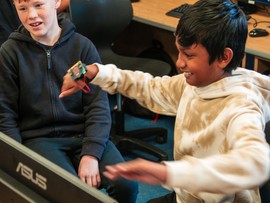Light sensing projects for your class
Projects and lesson guides to get the most out of the BBC micro:bit light sensor
Light sensors are input devices. They are used to detect changes in light levels and can be programmed to use this environmental information as an input to carry-out further instructions in computer systems. For example, you can code the micro:bit to make a night light that shines brightly when the light sensor senses it is dark; when the light levels are very low.
The micro:bit uses the LED display as the light sensor. The LED display performs two functions on the micro:bit, to light up and glow brightly and to also detect, measure and respond to the level of light wherever it is placed.
The light sensor is a great sensor to pick for teaching control systems because you can test it so easily. For example, shine a torch on it or cover it with your hand and get instant results.
This video explains how light sensors are used in real-world products and could give inspiration to your students to make their own.
Projects
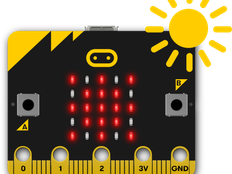
Make your micro:bit light up when the sun comes up
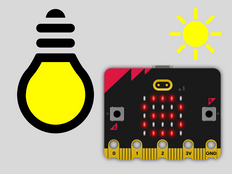
Measure the strength of light in different places
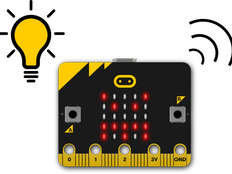
Make an alarm that goes off when lights go on
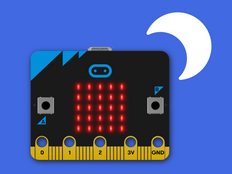
Create an automatic light that turns on when it’s dark.
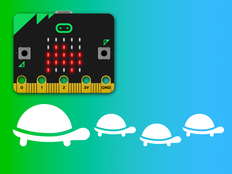
Prototype turtle-safe beach lighting
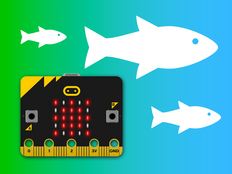
Prototype safer fishing nets
Lessons

Two simple projects to learn about the threats faced by fish and sea turtles and how technology can help them survive and promote bio-diversity. Design challenges for finding solutions to the Global Goals for sustainable development (SDGs).

Three simple projects to learn about the importance of road safety at night and create wearable devices to help young people ‘Be Safe: Be Seen!’ Design challenges for finding solutions to the Global Goals for sustainable development (SDGs).

Gather data about energy use around you using the BBC micro:bit as a simple data logger, then process and analyse the data to make informed decisions about reducing energy usage


